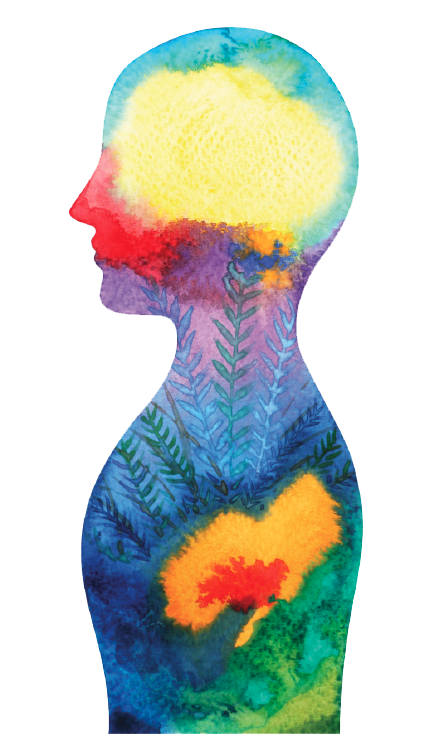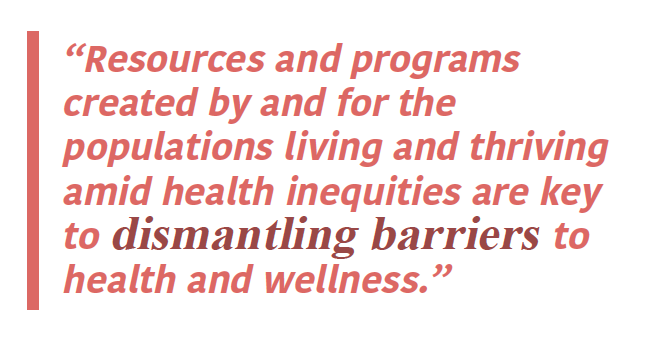Health Justice: An Introduction and Series Overview
 There have been well-meaning efforts to mitigate the challenges that health disparities create in Tribal communities. However, programs and health professionals have often failed to prioritize the social determinants of health, such as low economic status, high unemployment rates, lack of affordable and safe housing, food insecurity, and culture. The Westernized, bureaucratic, top-down approach for interventions, such as academic research on chronic health or healthcare responses to health disparities in Tribal communities, has not been adequate in addressing the health inequities, both on and off Tribal lands (Ravaghi et al., 2023; Wispelwey et al., 2023).
There have been well-meaning efforts to mitigate the challenges that health disparities create in Tribal communities. However, programs and health professionals have often failed to prioritize the social determinants of health, such as low economic status, high unemployment rates, lack of affordable and safe housing, food insecurity, and culture. The Westernized, bureaucratic, top-down approach for interventions, such as academic research on chronic health or healthcare responses to health disparities in Tribal communities, has not been adequate in addressing the health inequities, both on and off Tribal lands (Ravaghi et al., 2023; Wispelwey et al., 2023).
Health justice is a framework that advocates and allies work within to confront and resolve their communities’ health inequities, emphasizing developing policies and laws responsive to the needs of survivors and Tribal governments and communities (Benfer, 2015). Many advocates promote a health justice approach to healthcare and services to confront and resolve these health inequities, especially in under-resourced communities that lack adequate infrastructure. When left unresolved, health inequities can negatively impact the overall well-being of entire communities, resulting in struggling economies and a lower standard of living and quality of life (U.S. DHHS, 2021). Advocates who favor a health justice approach to healthcare/services want to address health inequities found in specific populations.
For health justice to be supported and implemented, healthcare institutions and programs centered on wellness must expand to include Indigenous perspectives, experience, and knowledge from various fields, including advocates and survivors of violence (McKinley, 2023). Resources and programs are created by and for the populations living and thriving amid health inequities. Recommendations include reassessing the limitations of current policies, specifically those with an emphasis on prevention and the equitable distribution of resources.
Health inequities are generally rooted in structural violence and settler colonialism. Structural violence is a conceptual framework used to assess and critique the (almost always) invisible violence created by social structures such as discrimination, poverty, and other social-political systems. Barbara Rylko-Bauer and Paul Farmer (2016) explain, “These structures are violent because they result in unavoidable deaths, illness, and injury, and they reproduce violence by marginalizing people and communities, constraining their capabilities and agency, assaulting their dignity, and sustaining inequalities.” (p. 47) Settler colonialism is a system set in place to both occupy the land of Native people and the intentional attempt to displace those same Native people (“settler colonialism,” 2022). Settler colonialism sets itself apart from colonialism (the attempt and act of taking control over another country, exploiting it and its people) by the ongoing and present intent to displace and erase Native people (“Terminology: Settler Colonialism vs Colonialism”). Health inequities found in Indian Country and Native Hawaiian communities can be connected to the broader structures mentioned in these frameworks by observing the high rates of illness, death, and disease. This structural insecurity is intentional and ongoing.
As we continue our advocacy for health justice and equity for Indigenous women and their communities, the National Indigenous Women’s Resource Center will explore issues that disproportionately impact Indian Country:
- The unique position of the cultural significance and need for subsistence practices among some Tribal communities is filled with nuance due to the correlation between firearms and domestic violence.
- Indigenous maternal health is a priority in Indian healthcare, but there still lies issues based on a history of intentional malpractice.
- The importance placed on prevention is understood across public health and healthcare; however, observing the role harm reduction plays in healthcare should not be overlooked as an adequate response to mental health conditions such as drug use disorders.
We aim to review each topic's challenges and highlight attempts by advocates, legislation, survivors, and programs throughout the country to confront these issues.
 Health injustice and inequity create opportunities for illness, disease, and even death, and the populations that suffer the most from these injustices are Indigenous and people of color, who have a shared history of systematic violence and trauma. Aspects of Indigeneity like kinship, connection to land, and cultural healing through ceremony create pathways to health and resiliency. Advocacy from Indigenous advocates is helping to empower and bring a sense of wellness back into the communities most negatively affected using a health justice approach.
Health injustice and inequity create opportunities for illness, disease, and even death, and the populations that suffer the most from these injustices are Indigenous and people of color, who have a shared history of systematic violence and trauma. Aspects of Indigeneity like kinship, connection to land, and cultural healing through ceremony create pathways to health and resiliency. Advocacy from Indigenous advocates is helping to empower and bring a sense of wellness back into the communities most negatively affected using a health justice approach.
References
Benfer, E.A. (2015). Health Justice: A Framework (and Call to Action) for the Elimination of Health Inequity and Social Injustice. American University Law Review, 6(2), 275-351.
McKinley, C.E. (2023). Health Equity Among US Indigenous Peoples: Understanding the Intersections of Historical Oppression, Resilience, and Transcendence. In Liamputtong, P. (eds) Handbook of Social Sciences and Global Public Health (pp. 1-20). Springer, Cham.
N.A. (2022, May). settler colonialism. Legal Information Institute. https://www.law.cornell.edu/wex/settler_colonialism
N.A. (n.d.). Terminology: Settler Colonialism vs Colonialism. University of Saskatchewan. https://teaching.usask.ca/curriculum/indigenous_voices/power-and-privilege/chapter-1.php
Ravaghi, H., et al. (2023). A scoping review of community health needs and assets assessment: concepts, rationale, tools and uses. BMC health services research, 23(1), 44. https://doi.org/10.1186/s12913-022-08983-3
Rylko-Bauer , B., & Farmer, P. (2016). Structural violence, poverty, and social suffering. In D. Brady & L. Burton (Eds.), The Oxford Handbook of the Social Science of Poverty (pp. 47–68). Oxford University Press.
U.S. Department of Health and Human Services. (2021) Community Health and Economic Prosperity: The Problem, the Causes, the Opportunities, and the Solutions. www.hhs.gov/sites/default/files/chep-sgr-at-a-glance.pdf
Wispelwey, B., et al. (2023). Because its power remains naturalized: introducing the settler colonial determinants of health. Frontiers in public health, 11, 1137428. https://doi.org/10.3389/fpubh.2023.1137428





